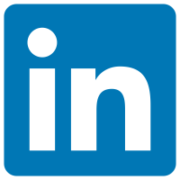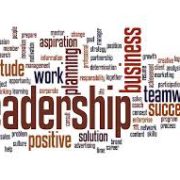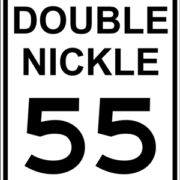“Double-nickeled and Stuck! Getting re-employed at 55 or beyond” – Part Three (b)
In Part Three (a), we laid out some of the changes to the job search process that have evolved recently in the face of advancing technologies and changing economic conditions. We also focused on the first of the three components in the inverted-pyramid strategy that comprises an effective job search for someone past the 50-year mark – the resume.
In Part Three (b), we dive into the second tier of the pyramid – social media. But not just any social media. If you haven’t been under that proverbial rock, you know that LinkedIn has become the 800 pound gorilla in job search. We’ll dig into why and how to use it most effectively.
Optimizing the resume and the LinkedIn profile are the foundation on which you build the ultimate solution to regaining meaningful re-employment – networking.

LinkedIn – friend or foe?
If you are a bit of a Luddite and eschew social media, let me just say that LinkedIn stands apart from the Facebook-like social media and to shun it is to put a huge hole in your ability to re-enter the job market.
Here are two statistics that should help you understand why LinkedIn has to be a key part of your search strategy.
- 500 million users worldwide; 128 million users in the U.S.
- Over 90% of recruiters (corporate and third party) and hiring managers use Linked In to find people.
For more detail on what LinkedIn has become, try this link.
For a job seeker, LinkedIn has two purposes:
- get noticed
- network effectively.
Let’s not make it any more complicated than that.
Get noticed – FIRST!
I’m going to come at you from the perspective of a recruiter and a power user of LinkedIn to find people, because I’m both. I suggest you put on a recruiter’s hat as you think about how you are going to put LinkedIn to work – and I’m going to fit you for that hat. So try to track with me on this.
What is a recruiter trying to accomplish, whether they are third party, like myself, or an HR corporate “talent acquisition representative” or, for that matter, a LinkedIn-savvy hiring manager operating on his/her own? OK, this is a “duh” – they are looking for someone to fill a new or vacated position that requires a specific set of qualifications and experience. But, here is a key understanding. They want that list of prospects to be short. These are busy people.

Your mission, if you choose to accept it, is to not only be on the short list but to be as close as possible to the top of results that their search produces.
I’m going to try to keep this fairly simple and manageable by just focusing on what I feel are the four most important components of your LinkedIn profile. There are other components that deserve attention but, IMHO, get these four done right first. These do the heavy lifting on getting you found.
But first, a warning. You’re being scanned
You have 6-12 seconds to make an impression with your profile. That’s been researched and documented. Recruiters, by nature and necessity, scan both resumes and LinkedIn profiles and spend, on average 1/10th of a minute looking at you. If you don’t grab them in the first one third of your LinkedIn profile and “incent” them to look at more of your profile, they are moving on. So you have to say it early and effectively.
#1: A picture is worth a – – – – –

Amazingly, 30-40% of the folks on LinkedIn don’t have a picture. Even if you’ve got a face ideally suited for radio, I suggest a professionally done photograph with a smile. I saw stats recently that said you are seven times more likely to be found if you have a picture, and eleven times more likely if you show teeth in a nice smile. Who knew?
I won’t speak for other recruiters but if my initial search has produced a list of, say, 200 people that I want to pare down to 25 or less, my first round of elimination are those without a picture. Seriously, without even looking at their qualifications. It just tells me they aren’t current, probably a bit sloppy, or, more likely, aren’t interested in being found to start with.
Don’t cut corners here. Forget the I-phone selfie. Get the photo done professionally, dress professionally and have a solid, light-colored background. No distracting, busy background.
#2: Headlines sell newspapers – and job seekers
Right underneath your picture is the most valuable piece of LinkedIn real estate – your headline. It’s one of the first, if not the first place the LinkedIn search algorithm goes in reviewing a profile.
There you have a space of 120 characters to tell the hiring world what you would like to be found for.
If you don’t, it defaults to the title on your current employment in your work history. Maybe you’ll be lucky and that title sufficiently states what you would like to be found for, but that’s pretty rare. You need to proactively go in and edit that headline using the titles that you are guessing that a recruiter or hiring manager is typing into her/his search string.
Here’s my LinkedIn profile headline. These are the things that I want people to contact me about.
Medical Recruiting | Executive Search | Job Search and Career Coach | Speaker
Here’s another from one of my past coaching clients:
Laboratory Sales Professional | Healthcare Operations Management | Business Development Director
Here’s another one from a referral that just contacted me this week looking for some assistance on re-entering the job market:
Consultant seeking project or full time employment.
Headline #3 doing any good? No. In fact, I think a headline like that backfires, especially if the rest of the profile reveals someone past 55. Again, headlines that say “seeking new opportunities”, or something to that effect, fall to the bottom of my list of prospects. As a recruiter, I am paid to find top performers who are currently fully-employed and “heads down” but open to new opportunities.
How do I know I have the right titles?
As an experienced professional, you should know what titles are the most common in your industry and area of expertise. But if there is some doubt, or you want to make sure that you pick up on shifts in job titles in your space, review job postings that appear on the career sections of the professional organization websites that you follow. If they don’t have a career site, contact someone at the organization for advice. Or who do you know in your network that does what you do that might have some insight into title changes?
With 120 characters, you have room to include different wording of titles. Start with something. Remember, editing your headline is a 2-minute experience if you need to change or add something.
#3: Summary and Work History
Right below your photo and headline is a summary section. You’ll notice that when you click on anybody’s profile that this section only shows two lines of content with the option to “show more” to see the rest.
Remember the 1/10th of a minute? You need to say in the approximately 230 characters (including spaces) in these two lines something that will catch the hiring manager/recruiter’s attention get them to and click on “show more”. In the balance of the section, you should list 4-6 major accomplishments along with your special skills listed vertically using hard returns after each skill.
Here’s the Summary from J.T. O’Donnell’s profile to illustrate what I mean. J.T. is one of the premier LinkedIn trainers and long-time career and job search coach.
18+ years of experience in the development and delivery of HR, employment, recruiting, job search, and career development tools and resources. Delivered 200+ presentations to 10,000+ professionals on a wide variety of career topics. Managed teams of 50+ with budgets of $35M+.
Specialties:
Career Advice & Job Search Strategy
Career Assessment & Planning
Career Decoder
Interview Preparation
Salary Negotiation
Career Coaching
Personal Branding
Resume Development
LinkedIn Usage
Employment Branding
Team Training & Corporate Development
Executive Leadership Coaching
Social Media in the Workplace
Recruiting
Candidate Experience
Talent Acquisition & Retention Strategies
The Experience section, where you list your previous work history should emphasize results, accomplishments – notable and number or percentage-based achievements, much the same as your resume. Again, remember the scanning. Numbers jump off the page. Numbers show productivity. Numbers show problem solving.
The Experience section must be consistent with the resume. It doesn’t have to be an exact duplicate of the resume but it must be consistent. You don’t want to create doubt through gaps or inconsistencies between the two.
But I’m going to give away my age!
Yeah, maybe. But you can be smart about it and not put your 1984 graduation date in your education section. Just state the college/university and the degree.
And don’t go back more than 15 years in the Experience section.
Pictures don’t lie so there really aren’t any tricks there. But I’d still go with a photo vs trying to hide the age by not having one.

#4: Endorsements and Recommendations
Endorsements and recommendations can help you come up higher on a list of candidates that a recruiter’s search produces.
You can select 50 different skills in the Featured Skills and Endorsements section. There are two schools of thought here: (1) take advantage of all 50 or (2) narrow your selection of skills to a 12-15 that really focus on your core skills.
I’m a fan of the 12-15. I think it makes it easier for the endorser to make a decision on what they are going to endorse you for. Plus it’s easier to move the one’s that I want to get endorsements for into an order that will insure that I get more endorsement for that skill.
You can check out my selection of skills and how I’ve ordered them with a quick visit to my profile.
How do you get endorsements? Give them. Most savvy people that you endorse will endorse you back. Strive to get 99+ showing on your key skills. These skills should align with those stated in your headline.
Recommendations are important. Here, I suggest being bold and reaching out to people who you are confident would recommend you. Send them a recommendations request (click the three dots just to the right of your picture – you’ll find the “request a recommendation” link there). If they don’t respond, remind them a couple of times – the failure to respond is usually because they are busy. If a few reminders don’t get movement, be bold and write one for them and ask them if they would submit it.
Also, giving recommendations will usually generate a recommendation in return.

Keywords
Let me wrap this up by emphasizing the importance of keywords. Keywords related to your skill set and to the types of positions you want to be found for need to be dispersed throughout your profile. They can appear in your headline, your summary, your work history and in your endorsements.
LinkedIn has a very effective search algorithm and experienced recruiters will use very sophisticated search techniques using LinkedIn’s Boolean search method. Keywords will be the foundation of any search.
Here’s a search string a former recruiting colleague of mine and LinkedIn power-user used to find a Mechanical Engineer with R&D background for one of his clients. At first glance it’s a bit of a brain twister but on examination you can see how he has used different types of keywords, along with some filters ( current companies, location) to narrow his search.
R&D/Mechanical Engineer Search String
(“mechanical engineer” OR “mechanical engineering” OR “R&D Engineer” OR “Research and Development Engineer”) AND (R&D OR “research and development”) AND (“drug delivery” OR “drug-delivery” OR intravenous OR “combination device”) AND “medical device” NOT director AND NOT (VP OR “vice president”) AND (“product launch” OR “product development”) AND CAD AND (FEA OR “finite element analysis”) + Current company: Sanofi, Medtronic, Eli Lilly and Company, Novo Nordisk, PA Consulting Group, West Pharmaceutical Services, Ypsomed AG, Cambridge Consultants, Team Consulting +Location: United States
This search produced less than a dozen qualified candidates for this recruiter from a universe of 458,680 mechanical engineers and 41,700 mechanical engineers with R&D background on LinkedIn and resulted in a very lucrative placement and a happy client and candidate. This illustrates why having the recruiter hat on and understanding the importance of having a complete profile with keywords can really enhance your search. Your goal is be one of those twelve in a search. All of the above will help get you there.
Next series, we’ll take a look at a networking strategy – where the rubber really hits the road.
Let us know your thoughts about this post. Have you had success using LinkedIn? Other than just an up-to-date profile, how else have you used LinkedIn successfully in your job search? Scroll down and leave us a comment – we appreciate your feedback.




Leave a Reply
Want to join the discussion?Feel free to contribute!